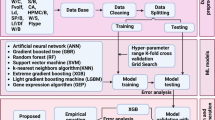Abstract
Ancient Roman concrete presents exceptional durability, low-carbon footprint, and interlocking minerals that add cohesion to the final composition. Understanding of the structural characteristics of these materials using X-ray tomography (XRT) is of paramount importance in the process of designing future materials with similar complex heterogeneous structures. We introduce Materials Data Science algorithms centered on image analysis of XRT that support inspection and quantification of microstructure from ancient Roman concrete samples. By using XRT imaging, we access properties of two concrete samples in terms of three different material phases as well as estimation of materials fraction, visualization of the porous network and density gradients. These samples present remarkable durability in comparison with the concrete using Portland cement and nonreactive aggregates. Internal structures and respective organization might be the key to construction durability as these samples come from ocean-submersed archeological findings dated from about two thousand years ago. These are preliminary results that highlight the advantages of using non-destructive 3D XRT combined with computer vision and machine learning methods for systematic characterization of complex and irreproducible materials such as archeological samples. One significant impact of this work is the ability to reduce the amount of data for several computations to be held at minimalistic computational infrastructure, near real-time, and potentially during beamtime while materials scientists are still at the imaging facilities.
Similar content being viewed by others
References
R. Andrew, Global CO2 emissions from cement production, Earth System Science Data, 10, 195–217, (2018).
F. Williams, Concrete responsible for 8 percent of all CO2 emissions, https://www.architectsjournal.co.uk/news/concrete-responsible-for-8-per-cent-of-all-co2-emissions-says-report/10038404.article (accessed 10 December 2019).
E. Mittelman, The Cement Industry, One of the World’s Largest CO2 Emitters, Pledges to Cut Greenhouse Gases, https://e360.yale.edu/digest/the-cement-industry-one-of-the-worlds-largest-co2-emitters-pledges-to-cut-greenhouse-gases (accessed 10 December 2019).
M. Jackson, C. Sejung, S. Mulcahy, Meral C. Akgul, R. Taylor, P. Li, A. Emwas, J. Moon, S. Yoon, G. Vola, H. Wenk, P. Monteiro, Unlocking the secrets of Al-tobermorite in Roman seawater concrete. American Mineralogist. 98. 1669–1687. 10.2138/am.2013.4484, (2013).
M. D. Jackson, S. R. Mulcahy, H. Chen, Y. Li, Q. Li, P. Cappelletti, Rudolf H. Wenk, American Mineralogist 102 (7): 1435–1450, (2017).
I. Goodfellow, Y. Bengio, A. Courville, Deep Learning, MIT Press (2016).
D. M. Ushizima, H. A. Bale, E. W. Bethel, P. Ercius, B. Helms, H. Krishnan, L. T. Grinberg, M. Haranczyk, A. A. Macdowell, K. Odziomek, D. Y. Parkinson, T. Terciano, R. O. Ritchie, C. Yang. IDEAL: Images across domains, experiments, algorithms and learning. The Journal of The Minerals, Metals & Materials Society, pages 1–10, Sep (2016).
S. Liu, C. N. Melton, S. Venkatakrishnan, R. Pandolfi, G. Freychet, D. Kumar, H. Tang, A. Hexemer, D. M. Ushizima, Convolutional neural networks for grazing incidence x-ray scattering patterns: thin film structure identification, (9)2: 586–592, (2019).
H. A. Bale, A. Haboub, A. A. MacDowell, J. R. Nasiatka, D. Y. Parkinson, B. N. Cox, D. B. Marshall and R. O. Ritchie, Nature Materials 12: 40–46, (2013).
M. Willemink and P. Noel, The evolution of image reconstruction for CT—from filtered back projection to artificial intelligence, European Radiology, 29:10, (2018).
P. J. M. Monteiro, C. Y. Pichot, and K. Belkebir. Computer tomography of reinforced concrete. In Materials Science of Concrete, American Ceramics Society, volume 5: pages 537–572, (1998).
C. Brandon, R. L. Hohlfelder, M. D. Jackson, and J. P. Oleson, Building for Eternity: The History and Technology of Roman Concrete Engineering in the Sea. Oxbow Books, Oxford, page 327, (2014).
Lawrence Berkeley National Laboratory Advanced Light Source Beamline 8.3.2. http://microct.lbl.gov/ (accessed 10 December 2019).
D. Gmaiursoy, De F. Carlo, X. Xiao, and C. Jacobsen, Tomopy: a framework for the analysis of synchrotron tomographic data, Journal of Synchrotron Radiation, 21(5):1188–1193, (2014).
van der S. Walt, J. L. Schmaionberger, J. Nunez-Iglesias, F. Boulogne, J. D. Warner, N. Yager, E. Gouillart and T. Yu, “scikit-image: image processing in Python” Peer J vol. 2: e453, (2014).
E. Gouillart, Segmentation of 3-D tomography images with Python and scikit-image, September (2015). http://emmanuelle.github.io/segmentation-of-3-d-tomography-images-with-python-and-scikit-image.html (accessed 10 December 2019).
Miramontes-S. Lizarraga, D. Ushizima, D. Parkinson, Evaluating fiber detection models using Neural Networks, ISVC’19, (2019).
R. Achanta, A. Shaji, K. Smith, A. Lucchi, P. Fua and S. Smaiusstrunk, SLIC superpixels compared to state-of-the-art superpixel methods. IEEE transactions on pattern analysis and machine intelligence, 34(11): 2274–2282, (2012).
Y. Sato, S. Nakajima, H. Atsumi, T. Roller, G. Gerig, S. Yoshida, R. Kikinis, 3D multi-scale line filler for segmentation and visualization of curvilinear structures in medical images. In J. Troccaz, E. Grimson, and R. Mmaiosges, eds., Proc. CVRMed-MRCAS’97, LNCS, pages 213–222, (1997).
T. Ojala, M. Pietikmaiainen, and D. Harwood, Performance evaluation of texture measures with classification based on Kullback discrimination of distributions, Proceedings of the 12th IAPR International Conference on Pattern Recognition (ICPR 1994), vol. 1, pp. 582–585, (1994).
L. Breiman, Random Forests, Machine Learning, 45(1): 5–32, (2001).
I. Witten, E. Frank, and M. Hall, Data Mining: Practical Machine Learning Tools and Techniques, 3 edition, (2011).
N. Kumar, S. Khatri, Implementing WEKA for medical data classification and early disease prediction, IEEE International Conference on Computational Intelligence & Communication Technology, (2017).
K. Xu, P. Monteiro, D. Ushizima, Unveiling the secrets of Roman Concrete with Computer Vision, 2018 SSRL/LCLS Users’ Meeting, (2018).
D. Ushizima and de A. Siqueira, “scikit-image: 3D Image Processing” Image Analysis across Domains, ImageXD’2019, Berkeley, CA. https://github.com/imagexd/2019-tutorial-skimage. (accessed 10 December 2019).
S. Brisard, M. Serdar, P. J. M. Monteiro, “Multiscale X-ray tomography of cementitious materials: A review” Cement and Concrete Research 128 (2020).
Author information
Authors and Affiliations
Rights and permissions
About this article
Cite this article
Ushizima, D., Xu, K. & Monteiro, P.J.M. Materials Data Science for Microstructural Characterization of Archaeological Concrete. MRS Advances 5, 305–318 (2020). https://doi.org/10.1557/adv.2020.131
Published:
Issue Date:
DOI: https://doi.org/10.1557/adv.2020.131




